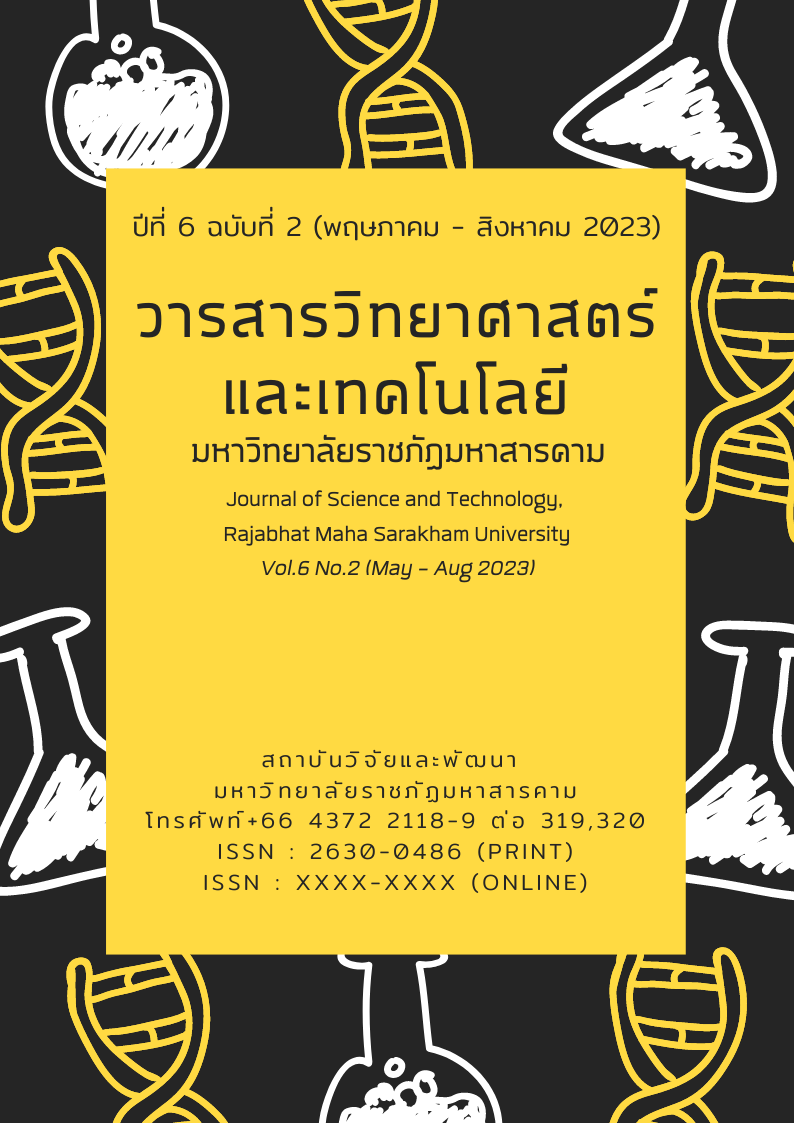Study of Land Use Changes Using Landsat Satellite Image Data in Bo Luang Subdistrict, Hot District, Chiang Mai Province
Keywords:
Remote Sensing, Land use change, Landsat 7, Landsat 9Abstract
The use of Landsat satellite image data in Bo Luang subdistrict, Hot district, Chiang Mai province aimed to study land use change during 2002 and 2022 by using visual interpretation. The results found that in 2002 forest area was 236,626.28 rai (89.65%), agricultural area was 23,621.42 rai (8.95%), community area was 2,757.22 rai (1.04%), miscellaneous area was 843.35 rai (0.32%) and water area was 102.41 rai (0.04%). Twenty years after (2022) the forest area was 218,811.74 rai (82.90%), agricultural area was 33,694.83 rai (12.77%), urban and community area was 2,586.22 rai (0.98%), miscellaneous area was 8,751.44 rai (3.31%) and water area was 106.45 rai (0.04%). The total area of 35,971.03 rai or 13.63% was changed during 2002 and 2022. Forest area was 17,814.53 rai or 49.52% decreased and agricultural area was 10,073.40 rai or 28.00% increased.
References
Anderson, J. R. (1971). Land use classification schemes used in selected recent geographic applications of remote sensing. Photogrammetric Engineering, 37(4), 379-387.
Chuchip, K. (2020). Remote sensing of basic course materials of geographic information. Course Management Guidance Committee 01349311 and 01349312 Kasetsart University, Bangkok. [in Thai]
Congalton, R. G. & K. Green. (1999). Assessing the Accuracy of Remotely Sensed Data: Principles and Practices. Lewis Publishers, United States.
Geo-Informatics and Space Technology Development Agency (Public Organization). (2009). Space Technology and GEO-informatics. Bangkok: Amarin Printing and Publishing Public Company Limited. [in Thai]
Jantawat, S. (1981). Principles of land use. Department of Soil Science, Faculty of Agriculture, Kasetsart University, Bangkok. [in Thai]
Khunrattanasiri, W. (2020). Satellite Imagery for Forest Resource Survey. Department of Forest Management, Faculty of Forestry, Kasetsart University, Bangkok. [in Thai]
Ministry of Natural Resources and Environment. (2013). Practice guide of aerial photography translation of the Subcommittee on Aerial Photography Reading. Public Land Solve The Invasion Problem Bureau, Bangkok. [in Thai]
Pongput, N. (2015). The Effect of Land Use Changes on Landslide in Klong Khram Watershed, Surat Thani Province. Kasetsart University, Bangkok. [in Thai]
Sangawongse, S. (2009). Remote sensing for land-use/land-cover monitoring and application. 1st ed., Bangkok: Chulalongkorn University press. [in Thai]



